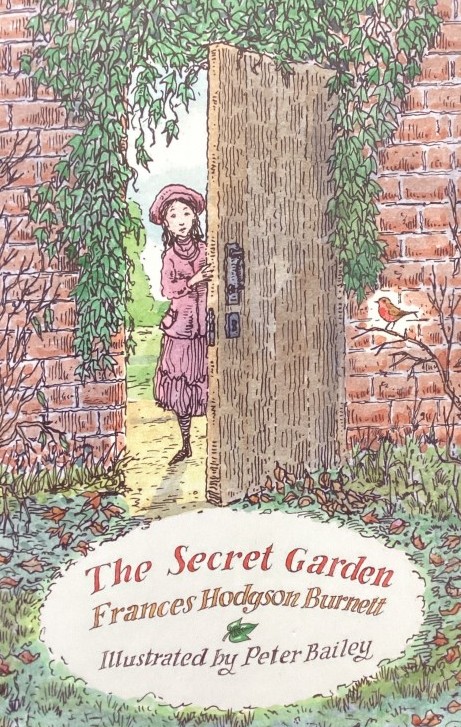Inspiring Young Readers
 posted on 13 Jul 2022
posted on 13 Jul 2022
The Secret Garden by Frances Hodgson Burnett
Originally published in 1911, The Secret Garden has become an established ‘classic’ of the children’s literature canon. Having said that, I’m not sure how often it is read in its totality by children today and as there are a number of abridged illustrated editions or film and television versions around, I suspect these may be more popular.
This is the first time I’ve read the book and although I was familiar in outline with the story and some of the key themes, I didn’t expect to discover such a richly layered and textured novel. The book is much longer than most children’s classics – it runs to 300 pages in the paperback version I read (the 2016 Alma classics version illustrated by Peter Bailey) – but it is easy to stay with and Burnett was clearly mindful of blending sophisticated ideas with accessible language to keep the whole thing child-friendly. Unlike quite a lot of Edwardian children’s fiction the language seems remarkably modern and not at all convoluted.
The key theme of the novel is the redemptive power of nature. 10 year-old Mary Lennox is a child of parents living a privileged life in colonial India. She’s an unprepossessing young girl who is physically and spiritually ‘ugly’. She takes her privilege for granted, lets servants do everything for her and gives the impression that the world exists only for her. When she is orphaned by an outbreak of cholera and shipped back to England, she is sent to live with an uncle who lives on the edge of the Yorkshire moors.
Her uncle is a bit of a mystery man too who is often away and who clearly has no expectation of engaging with his niece. He has a disability – its described as a hunchback – and he’s clearly in a state of deep depression following the death of his beloved wife.
Mary’s transition to Yorkshire is initially painful and lonesome but with the help of a robust working class cook, maid and gardener, she starts to develop a dawning interest in the house’s gardens – and especially the rumour of a hidden or secret garden that has something to do with the dead wife of her uncle.
Slowly but surely Mary is drawn into the world of nature and the cultivation of nature, first developing a wary friendship with the brusque gardener and then with a young boy called Dickon. Dickon is the brother of the maid Martha - with who Mary develops a tentative friendship - and is a child of nature who seems to embody the life force of the moor and the animals that live there.
Mary becomes fixated with finding a way into the forbidden secret garden and after finding a key to a hidden door she starts to covertly cultivate the ground behind the walls and recruits Dickon to help her. All of this blossoming of the garden parallels the blossoming of Mary herself from frail, sulky ugliness to a young girl full of life and promise.
At the same time as this is happening Mary discovers that hidden away in the house is Colin, the invalid son of her Uncle who is housebound and has become as insufferable as Mary had once been herself.
With the help of Mary, Dickon and with exposure to the beauties of the secret garden, Colin comes to realise that he’s not actually ill but has allowed himself to be erroneously convinced that he’s going to inherit his father’s disability. The thought that he was going to develop a hunchback seems to literally weigh him down.
Colin and his father – who is travelling abroad – seem to be in some way spiritually linked and as Colin’s health improves and normalises, his father depression lifts and he rushes home to be with his son. The transformation is complete.
I’ve not been able to touch on a number of other themes in detail here – the issues of the way colonialism damages lives, the implications of social class and the adult-child relationships – but the book opens doors on all these debates. Reading the book is a rich experience.
There are, of course, lots of copies of this book available – paperback, hardback, illustrated – at a range of prices and you can pick up a copy very cheaply. Needless to say, first editions are super expensive.
Terry Potter
July 2022